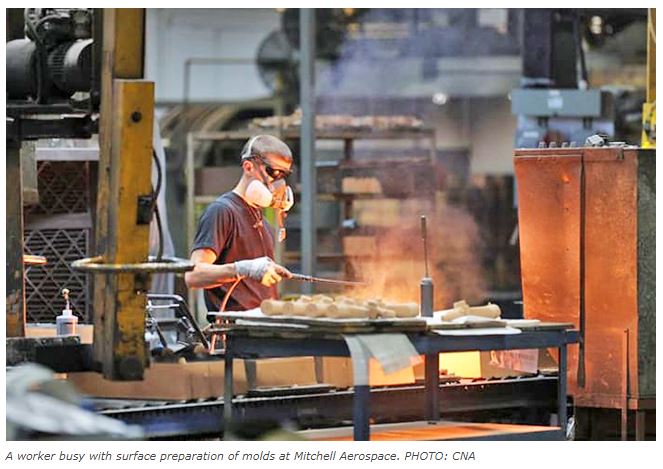Asia’s factory activity weakens on global slowdown, cost pressures
CNA – Asia’s factory output mostly weakened in September as slowing demand in China and advanced economies added to the pain from persistent cost pressures, surveys showed yesterday, clouding the region’s economic recovery prospects.
Manufacturing activity shrank in Taiwan and Malaysia, and grew at a slower pace in September compared with August in Japan and Vietnam, as rising raw material costs and the darkening global outlook weighed on corporate sentiment.
The surveys came after China’s factory and services activity data on Friday pointed to further cooling in the world’s second-largest economy as strict COVID-19 lockdowns disrupted production and dampened sales.
“We’re seeing economic conditions deteriorate in China, the United States (US) and Europe. That’s definitely weighing on Asian manufacturing activity,” said chief economist at Dai-ichi Life Research Institute in Tokyo Toru Nishihama.
“While supply disruptions may have run its course, Asia is now suffering from slumping global demand.”
The au Jibun Bank Japan Manufacturing Purchasing Managers’ Index (PMI) slumped to 50.8 in September from 51.5 in the prior month, marking the weakest growth rate since January last year.
New orders shrank at the fastest rate in two years, while output posted its sharpest decline in a year due to weakening demand from China and other trading partners, Japan’s PMI survey showed.
“Weakness in the yen is doing little to bolster export demand either and instead is pushing imported inflation up drastically and drove domestic price pressures up even further,” said senior economist at S&P Global Market Intelligence Joe Hayes.
Vietnam’s PMI fell to 52.5 from 52.7 in August, while that of Malaysia slid to 49.1 from 50.3, the surveys showed. Soaring inflation has forced US and European central banks to embark on interest rate hikes, stoking fears of a sharp downturn in global demand that had underpinned Asian exports.
China’s slowdown has also clouded Asia’s economic recovery. With few signs Beijing will significantly ease zero-COVID soon, many analysts expect China’s economy to grow by just three per cent this year, which would be the slowest since 1976, excluding the 2.2 per cent expansion during the initial COVID-19 hit in 2020.


 English
English




